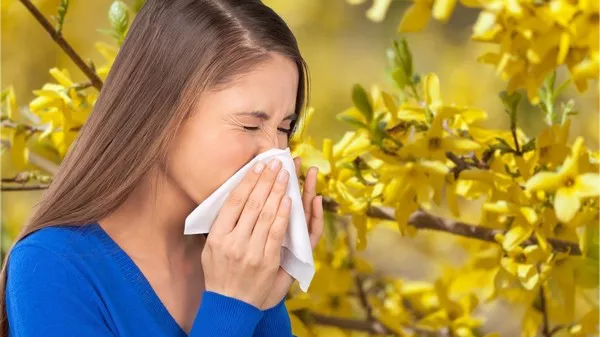As nature awakens with the changing seasons, many of us find solace in spending time outdoors. However, for individuals with allergies, the great outdoors can sometimes become a source of discomfort. Pollen from certain plants and trees can trigger allergic reactions, leading to sneezing, runny noses, itchy eyes, and more. In this article, we’ll explore the 10 worst plants and trees for your allergies, helping you identify potential outdoor allergy triggers and take steps to minimize exposure.
1. Ragweed (Ambrosia)
Ubiquitous Pollen Producer: Ragweed is a notorious allergen, producing vast amounts of pollen that is easily dispersed by the wind. Even a small amount of ragweed pollen can trigger allergic reactions in sensitive individuals.
Extended Pollen Season: The ragweed pollen season typically spans from late summer to fall, making it a significant allergy trigger during these months.
2. Oak Trees
Widespread Pollen Dispersal: Oak trees release large quantities of pollen, often carried long distances by the wind. This makes them a common source of allergies in many regions.
High Pollen Count: The high pollen count of oak trees can result in allergy symptoms for individuals sensitive to tree pollen.
3. Maple Trees
Sticky Pollen: Maple trees produce sticky pollen, which can adhere to surfaces and clothing. This can lead to increased exposure and allergy symptoms.
Springtime Pollen Release: Maple trees release pollen in the spring, coinciding with the season when many individuals experience allergies.
4. Pine Trees
Light and Airborne Pollen: Pine trees release light and airborne pollen that can travel significant distances. This can lead to widespread exposure for allergy sufferers.
Spring and Summer Pollen: Different species of pine trees release pollen during various times of the year, extending the pollen season for individuals sensitive to pine pollen.
5. Birch Trees
High Pollen Concentration: Birch trees release pollen in large quantities, contributing to high pollen concentrations in the air.
Cross-Reactivity: Some individuals with birch pollen allergies may experience cross-reactivity with certain foods, known as oral allergy syndrome.
6. Cedar Trees
Winter Allergen: Cedar trees release pollen during the winter months, making them a unique source of allergies when other plants are dormant.
Airborne Pollen: Cedar pollen can become airborne and cause allergies even during the cold months.
7. Grasses
Common Allergen: Grasses, such as Kentucky bluegrass and Bermuda grass, produce pollen that can trigger allergic reactions.
Seasonal Impact: Grass pollen is most prevalent in the late spring and early summer, coinciding with the peak of grass allergy season.
8. Juniper Trees
Allergenic Pollen: Juniper trees, commonly found in various landscapes, produce pollen that can lead to allergies.
Pollen and Allergy Symptoms: Juniper pollen can cause allergic reactions, particularly during the spring when pollen counts are high.
9. Mulberry Trees
Airborne Pollen: Mulberry trees release pollen that can become airborne and trigger allergies in susceptible individuals.
Blossom and Pollen: Both mulberry blossoms and pollen can contribute to allergies, especially during the spring and summer.
10. Ash Trees
Wind-Dispersed Pollen: Ash trees produce pollen that is easily dispersed by the wind, increasing the likelihood of exposure.
Allergy Seasons: Ash trees release pollen during their flowering season, which varies by species but often occurs in the spring.
See Also: Pollen Season: Everything You Need To Know
Conclusion
In conclusion, understanding the worst plants and trees for your allergies can empower you to take proactive steps to minimize exposure and manage your allergy symptoms. As you spend time outdoors, consider checking pollen forecasts and avoiding areas where known allergens are prevalent. If you’re particularly sensitive to certain plants, consult with an allergist for personalized guidance and potential treatment options. By staying informed and taking precautionary measures, you can continue to enjoy the beauty of nature while minimizing the impact of outdoor allergies on your health and well-being.


